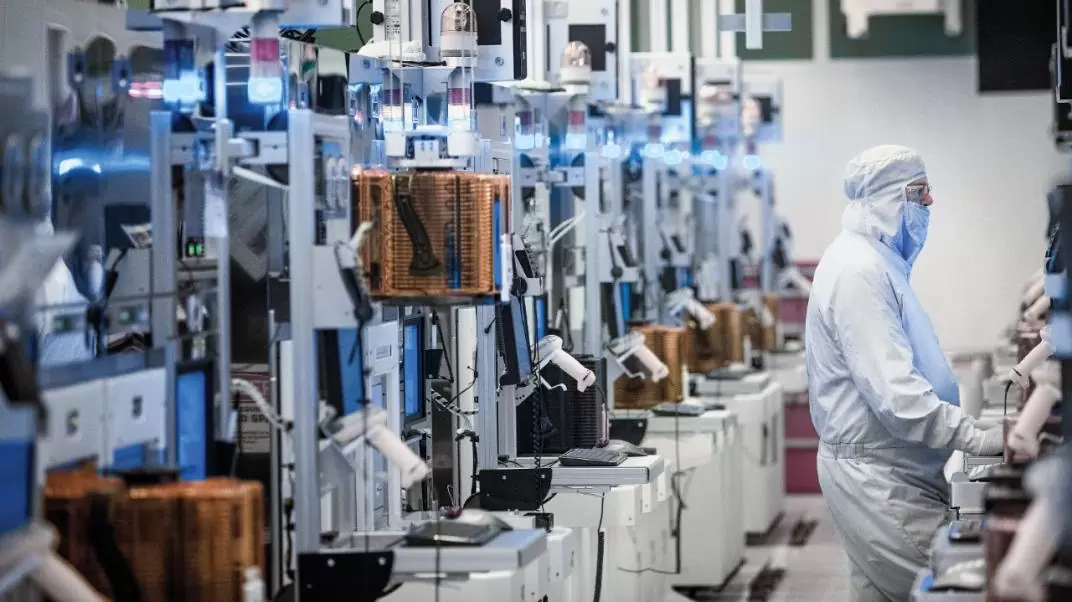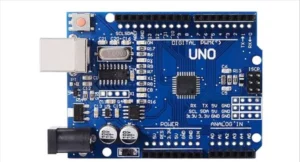Biggest challenge of life
John is a manufacturing engineer working in a 28nm semiconductor fabrication facility, often referred to as a “fab.” His role involves a wide range of responsibilities aimed at maintaining the smooth production of advanced semiconductor components.
As the sun begins to rise, John, a manufacturing engineer at the cutting-edge 28nm semiconductor fabrication facility, starts his day with a cup of coffee and a quick review of the day’s production schedule. Today promises to be a busy one with several critical lots scheduled for processing.
John received an automated alert on his mobile device notifying him of a critical issue with the lot handler. The alert contained information about the specific error message generated by the lot handler’s control software, along with details about the location of the equipment and the affected wafers.
Upon receiving the alert, John immediately recognized the severity of the situation. He knew that any disruption in the lot handler’s operation could lead to production delays and potential downstream impacts. This prompted him to act swiftly, abandoning his usual morning routine to head straight to the production floor and assess the situation in person.
The alert not only provided a snapshot of the issue but also triggered a chain of events involving John, the equipment operators, the maintenance team, and the process engineers. It prompted the quick assembly of a cross-functional team to address the problem, collaborate on troubleshooting, and determine the best course of action.
John contacts the equipment maintenance team to assist in troubleshooting the issue. He explains the situation, providing details about the error message and the sequence of events leading up to the problem. The maintenance team starts examining the lot handler’s control software and its interface with the fab’s central control system.
The process engineers are concerned that the lot handler issue might lead to increased cycle times, affecting the overall process flow. John coordinates a meeting with the process engineers, equipment maintenance team, and automation specialists to discuss the problem’s root cause and potential solutions.
Also Read: A Day in the Life of Yield Defect Density Engineer in a Semiconductor Fab
False Starts
John rushes to the production floor to assess the situation. He finds the lot handler stalled, with several wafers stuck in its loading chamber. The equipment operators are scrambling to diagnose the issue. John calmly takes charge, working alongside the operators to gather information on what happened just before the error occurred. He quickly realizes that there might be a software glitch in the automation system controlling the lot handler.
In the initial moments of troubleshooting the lot handler issue, John encountered several false starts as he and the cross-functional team attempted to pinpoint the root cause of the problem. These false starts were characterized by well-intentioned efforts that did not yield the desired results:
Hardware Inspection
Upon arriving at the production floor, John’s first instinct was to visually inspect the lot handler’s hardware components. He checked for any visible signs of damage or mechanical malfunctions that could be causing the error. However, the inspection revealed no apparent issues with the hardware. The lot handler’s components appeared to be in proper working condition, suggesting that the problem might be more software-related.
Restarting the System
As a common troubleshooting step, John and the team attempted to perform a system restart on the lot handler. They hoped that a simple reset might clear any temporary glitches and restore normal functionality. However, after restarting the system, the same error message persisted. This hinted at a deeper underlying problem that couldn’t be resolved through a quick reboot.
Reviewing Recent Changes
Thinking that the error might be related to recent changes, such as software updates or configuration adjustments, John and the team conducted a review of any recent modifications made to the lot handler’s control system.
They examined the change logs and consulted with the automation specialists who had performed the updates. However, the review didn’t reveal any obvious discrepancies or issues that could explain the error.
Network Connectivity Check
Suspecting that a network connectivity issue might be causing the problem, John had the IT team perform a thorough assessment of the network connections between the lot handler and the central control system.
They verified that data was flowing properly and that there were no network interruptions. Despite this, the error persisted, indicating that the issue likely lay elsewhere.
User Error Consideration
Considering that human error can sometimes trigger technical issues, John and the team explored the possibility that an operator might have inadvertently triggered the error.
They interviewed the equipment operators who had been working with the lot handler recently. However, the operators were confident that they had followed standard procedures, and there was no indication of operator error causing the issue.
Reverting to Previous Settings
In a last-ditch attempt, John and the team decided to revert the lot handler’s control software to a previous version that had been known to work well.
They rolled back the software to its previous state and hoped that this would resolve the issue.
Unfortunately, even with the older software version, the lot handler continued to exhibit the same error.
These initial false starts highlighted the complexity of the issue and underscored the need for a more systematic and comprehensive approach to troubleshooting.
Despite the initial setbacks, John’s determination and the collaborative efforts of the cross-functional team kept them on the path toward finding a solution that would ultimately overcome the challenge they faced with the lot handler error.
Innovative Solution: Implementing a Virtualized Control Layer
John decided to approach the lot handler error using a first principles thinking approach, which involves breaking down a complex problem into its fundamental components and reevaluating existing assumptions. He realized that the traditional methods of troubleshooting weren’t yielding results, and a new perspective was needed.
First Principles Thinking: Instead of focusing solely on the specific error message and trying to fix it directly, John took a step back and examined the underlying purpose of the lot handler – to move wafers between process steps efficiently and reliably. He recognized that the error might be a symptom of a broader issue related to communication between the lot handler’s software and the central control system.
Innovative Solution: John proposed the implementation of a virtualized control layer as a temporary workaround to the problem. This involved creating a software-based intermediate layer that would sit between the lot handler’s control software and the central control system. The virtualized layer would interpret and translate commands and data between the two systems, effectively masking any compatibility issues that might exist due to the recent software update.
Skepticism & implementation
The proposal is met with mixed reactions. The process engineers are concerned about potential delays and disruptions, while the equipment maintenance team is unsure about implementing the solution.
As the day draws to a close, John’s innovative approach pays off. The lot handler is back in operation, albeit in manual mode. This solution allows production to continue smoothly, minimizing delays and ensuring that critical lots are processed on time. John and his team continue to work on resolving the software issue, planning to implement a permanent fix in the coming days.
Solution Presentation and Discussion: John presents his proposed solution during a follow-up meeting with the cross-functional team, which includes equipment operators, maintenance personnel, automation specialists, process engineers, and IT experts. He explains the concept of the virtualized control layer, its benefits, and how it can be implemented to mitigate the lot handler error. The team discusses the feasibility, potential risks, and benefits of the solution.
Technical Evaluation: The automation specialists and IT experts in the team dive deeper into the technical aspects of the proposed virtualized control layer. They assess the complexity of implementing the intermediate layer, ensuring that it can accurately translate commands and data between the lot handler and the central control system without introducing new vulnerabilities or complications.
Risk Assessment and Contingency Planning: During the discussion, the team addresses potential risks associated with the implementation of the virtualized control layer. They consider scenarios where the solution might not work as intended or could impact other parts of the system. Contingency plans are devised to handle such situations, including rollback strategies and alternative approaches.
Management and Stakeholder Approval: The proposal and its technical details are summarized into a formal report that is presented to higher management and key stakeholders. Their approval is sought to move forward with the implementation. John, along with the support of the cross-functional team, presents the report and addresses any questions or concerns.
Implementation Planning: Once the solution is approved, a detailed implementation plan is developed. This plan outlines the steps, timeline, resources, and responsibilities required to introduce the virtualized control layer into the lot handler’s architecture. The plan also includes procedures for testing, monitoring, and evaluating the solution’s performance.
Development and Integration: The automation specialists begin developing the virtualized control layer software. They work closely with IT experts to ensure proper integration with both the lot handler’s control software and the central control system. The code is tested in a controlled environment to ensure its reliability and accuracy.
Testing and Validation: The virtualized control layer undergoes extensive testing to validate its functionality and performance. Simulation and emulation are used to mimic real-world scenarios and confirm that the translation of commands and data is seamless and accurate. The solution is tested in various scenarios, including manual operation and different process steps.
Pilot Implementation: A small-scale pilot implementation is carried out, where the virtualized control layer is deployed in a controlled section of the fab’s production line. This allows the team to observe the solution in action, gather feedback from operators, and identify any unforeseen challenges.
Refinement and Full-Scale Rollout: Based on the pilot results, the solution is refined if necessary. Any issues or improvements identified during the pilot phase are addressed. Once the virtualized control layer is deemed effective and reliable, it is implemented across the entire lot handler system.
Ongoing Monitoring and Optimization: After the solution is fully implemented, John and the cross-functional team continue to monitor its performance. They ensure that the virtualized control layer remains effective and adapts to any changes in the lot handler’s software or the central control system. Continuous improvement efforts are made to optimize the solution’s efficiency and reliability.
Through this process, John’s innovative solution transforms from an idea into a practical and effective measure that successfully addresses the lot handler error, allowing the fab’s production to continue without major disruptions.
Evening
As he leaves the fab, John reflects on the challenges he faced throughout the day. The collaborative effort of the cross-functional team and his ability to draw on past experiences to find a solution fills him with a sense of accomplishment. He knows that innovation and adaptability are key traits in the fast-paced world of semiconductor manufacturing, and he’s ready to face whatever challenges the next day might bring.




